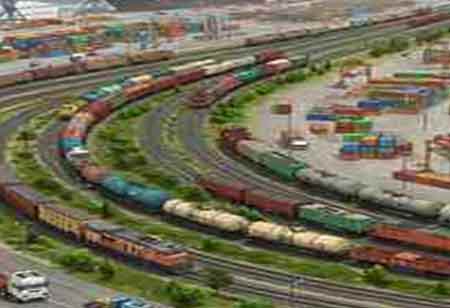THANK YOU FOR SUBSCRIBING
THANK YOU FOR SUBSCRIBING

By
Logistics Transportation Review | Monday, May 12, 2025
Stay ahead of the industry with exclusive feature stories on the top companies, expert insights and the latest news delivered straight to your inbox. Subscribe today.
The Internet of Things (IoT), blockchain technology, and the combination of AI and machine learning are among the most significant trends in rail logistics.
Fremont, CA: Rail logistics encompasses the strategic planning, management, and coordination involved in transporting goods and materials via railway systems. This process ensures the efficient movement of cargo by utilizing trains while integrating with other transportation modes as necessary to guarantee timely deliveries and cost optimization.
Key activities within rail logistics include route planning, scheduling, cargo handling, warehousing, and collaboration with ports or trucking services. It is particularly advantageous for bulk shipments and long-distance transport, offering environmentally sustainable logistics solutions due to the energy efficiency and high capacity inherent in rail transport systems.
Essential Benefits of Rail Logistics:
The most obvious and fundamental benefit of shipping via rail logistics is efficiency. From fuel savings to product handling, commodities can be delivered, processed, and stored for distribution using fewer resources. With costs and rates growing across the supply chain, finding cost savings is crucial for any organization. Rail logistics offer various ways to achieve significant cost savings. Trains haul with precise schedules and can move more quantities at a time than ordinary trucking, making transportation cheaper. Due to the vast volume of products kept in rail cars, handling at a warehouse or distribution center often saves money compared to truckloads coming in.
While rail logistics may not appear to be as flexible as truckload freight, it can be much more so. Oversized products, such as building materials, can be transported more easily in different types of rail cars, such as A-Frames, than in a dry van. Railcars can also carry significantly more weight than trucks and trailers. Loading huge numbers of heavy materials, such as paper or canned goods, can increase supply chain flexibility as goods travel throughout the country.
Key Trends Shaping Rail Logistics:
IoT is a distinguishing technology in the logistics industry, connecting devices, sensors, and systems across networks to gather, share, and analyze real-time data. Rail logistics uses integrated IoT devices into rail cars, tracks, and even cargoes to monitor performance, track location, and cargo condition. This approach promotes proactive decision-making by identifying potential disruptions or malfunctions before they become major concerns, hence increasing efficiency and reliability. Machine learning and AI play a vital role in the current technological environment, significantly improving predictive and prescriptive analytics in the rail logistics industry. They enable scenarios such as equipment failure prediction, optimal route planning, and precise freight demand forecasting. As a result, schedulers and route planners can drastically reduce operating costs and downtime, changing the way rail operators approach preventive maintenance and demand planning.
I agree We use cookies on this website to enhance your user experience. By clicking any link on this page you are giving your consent for us to set cookies. More info





